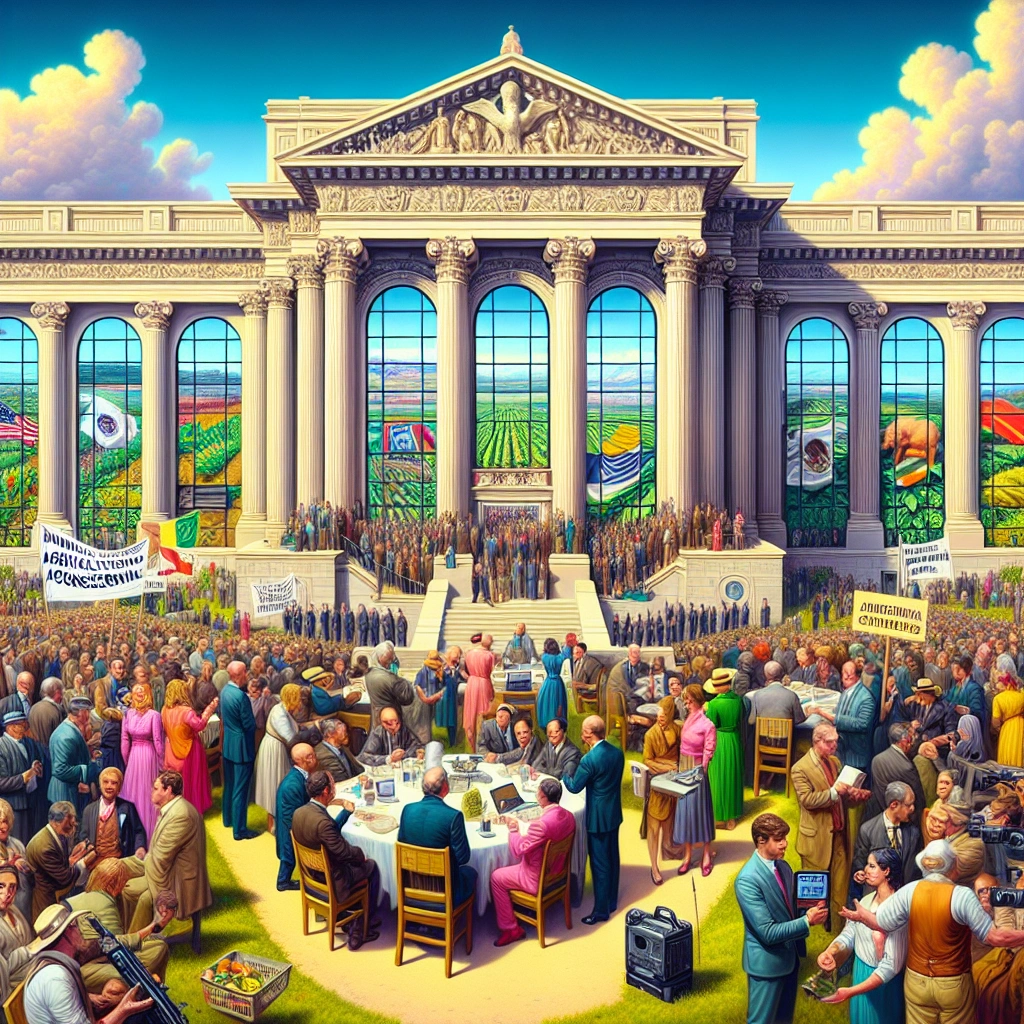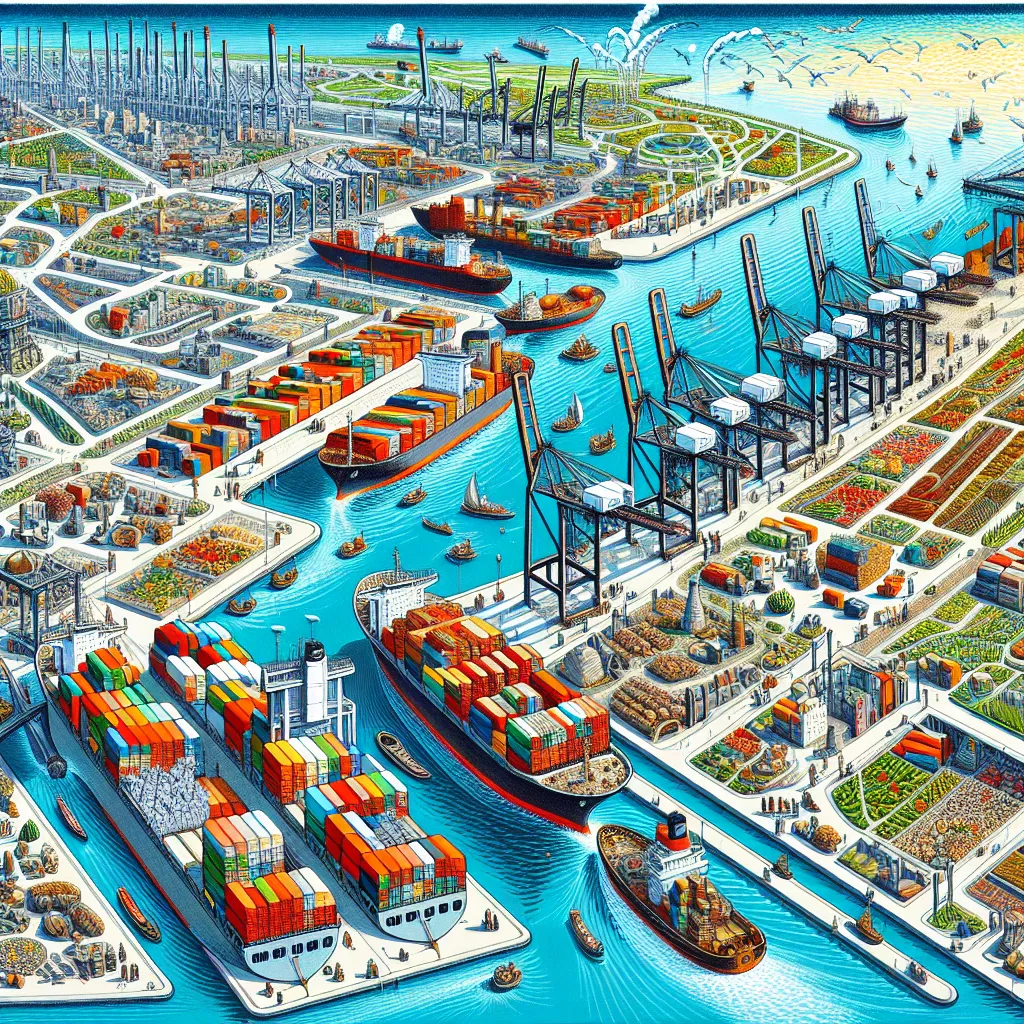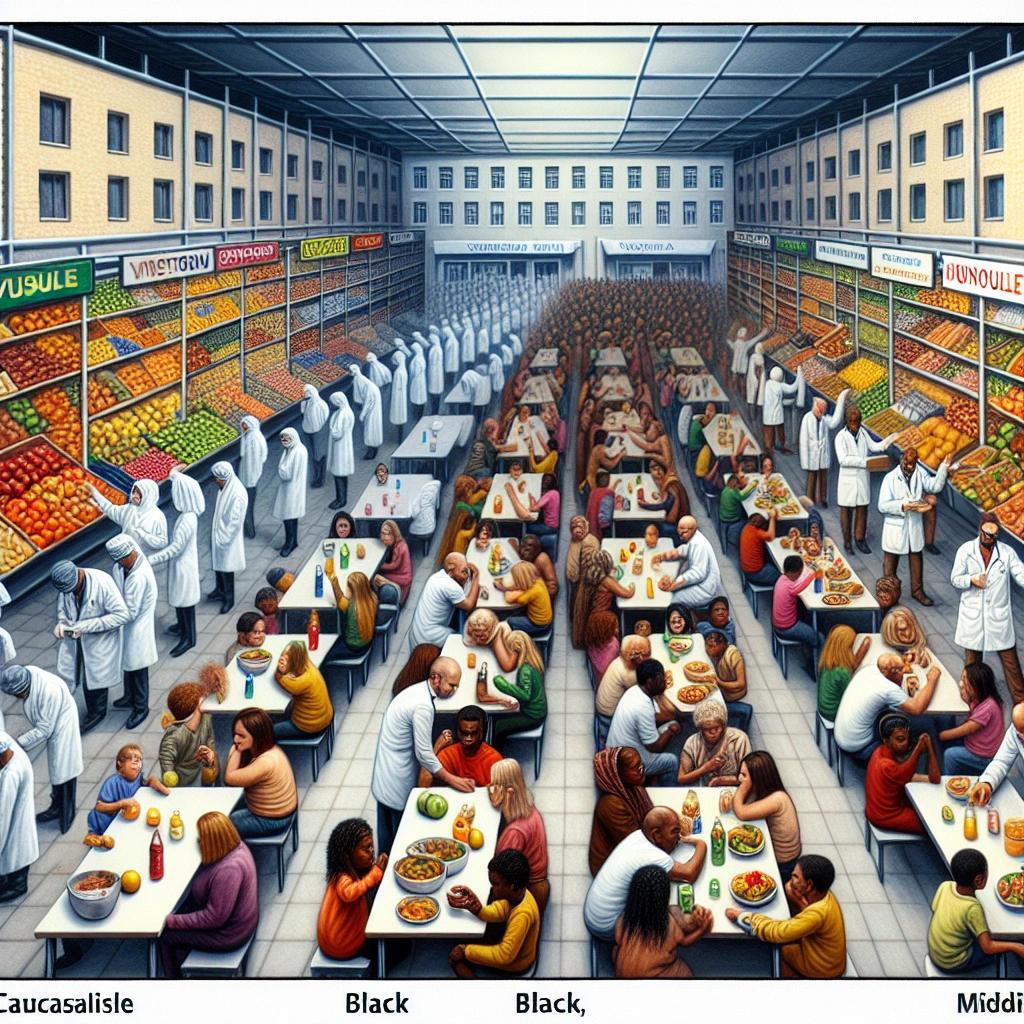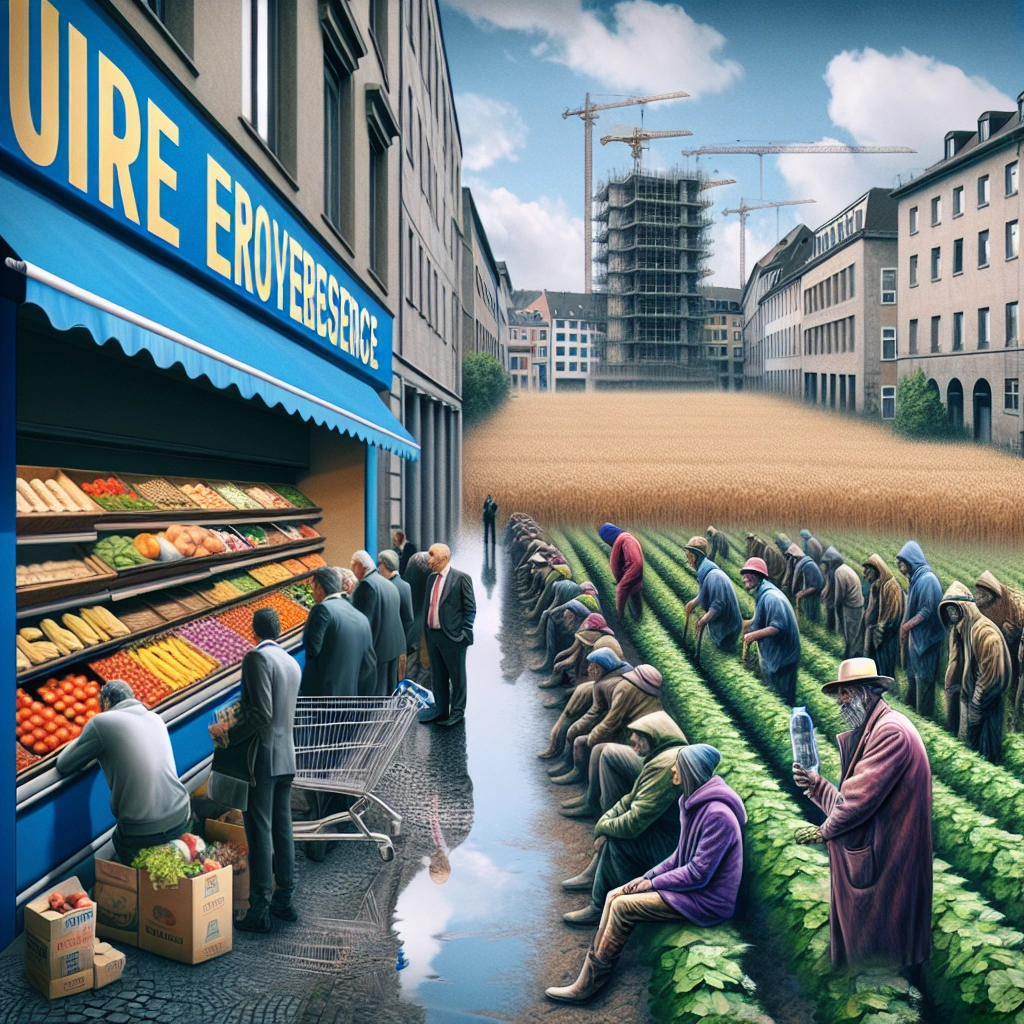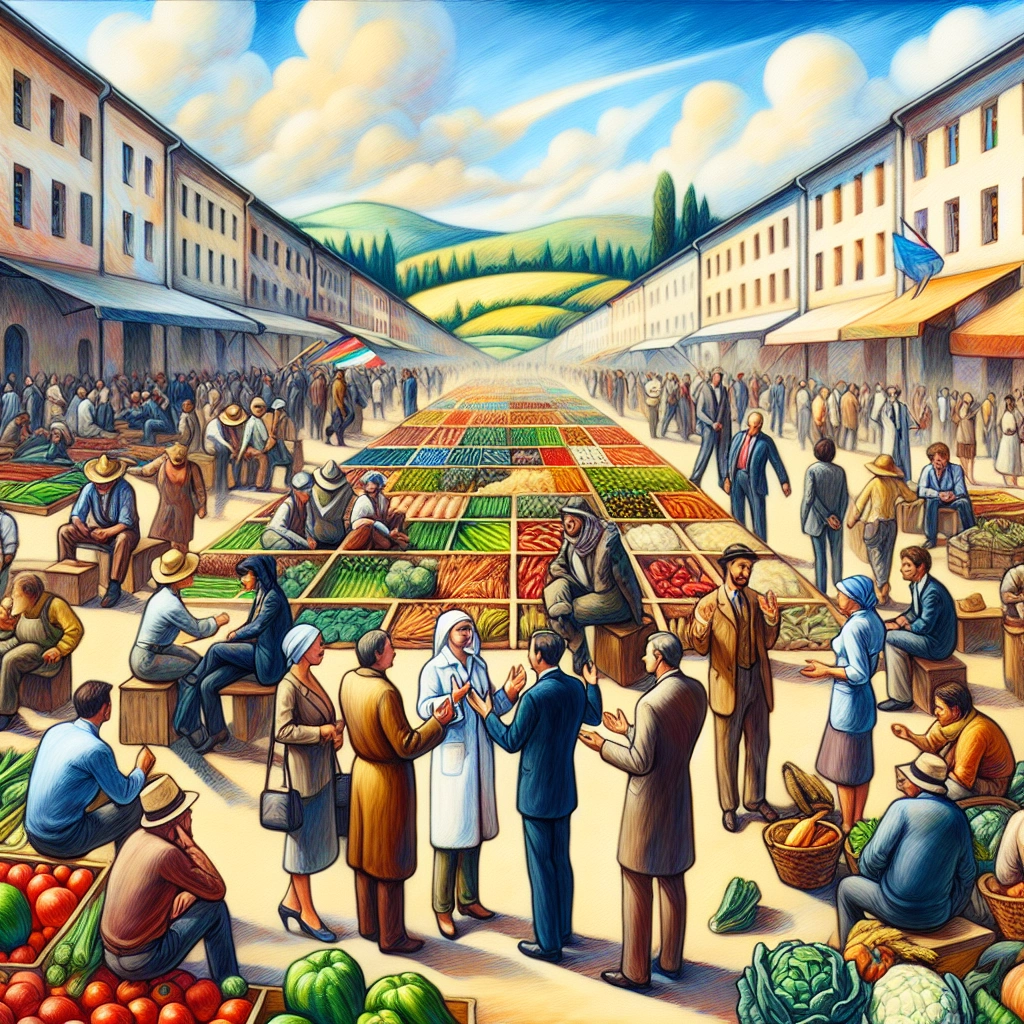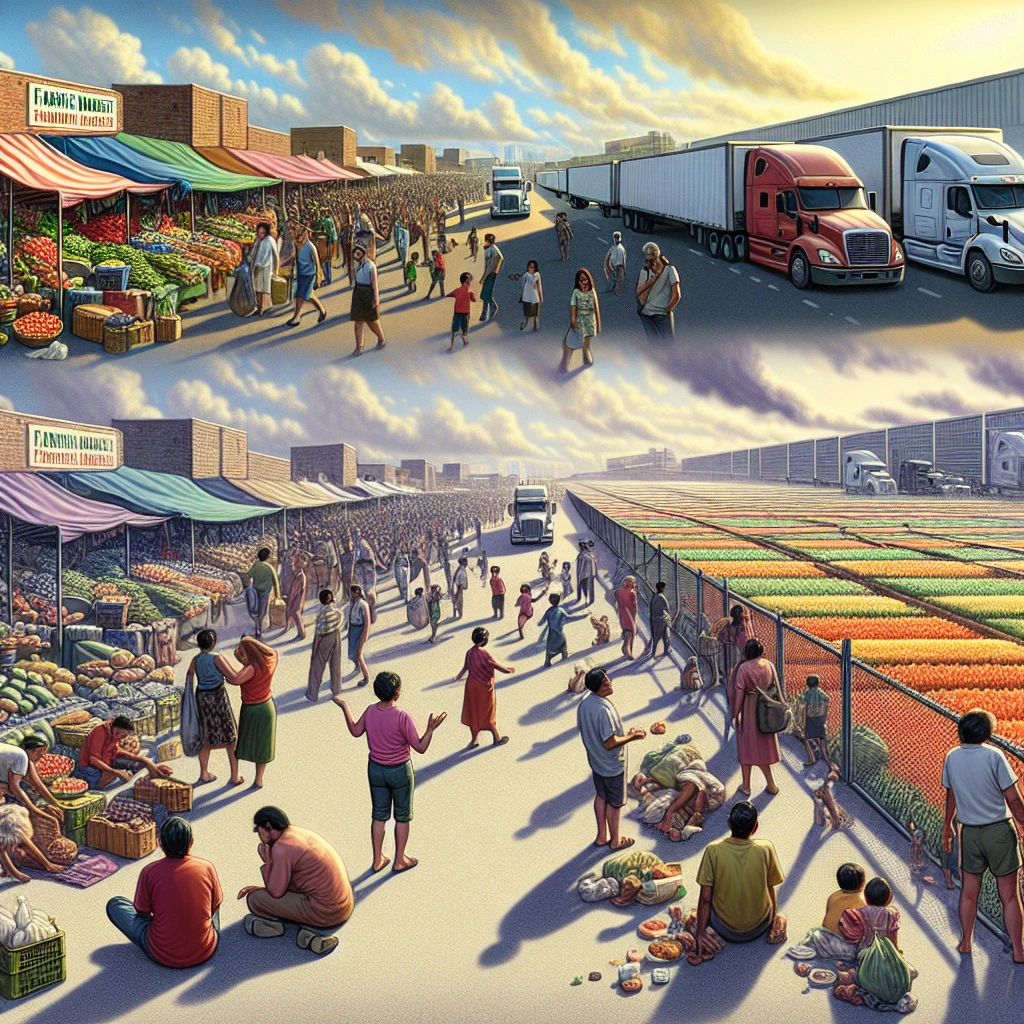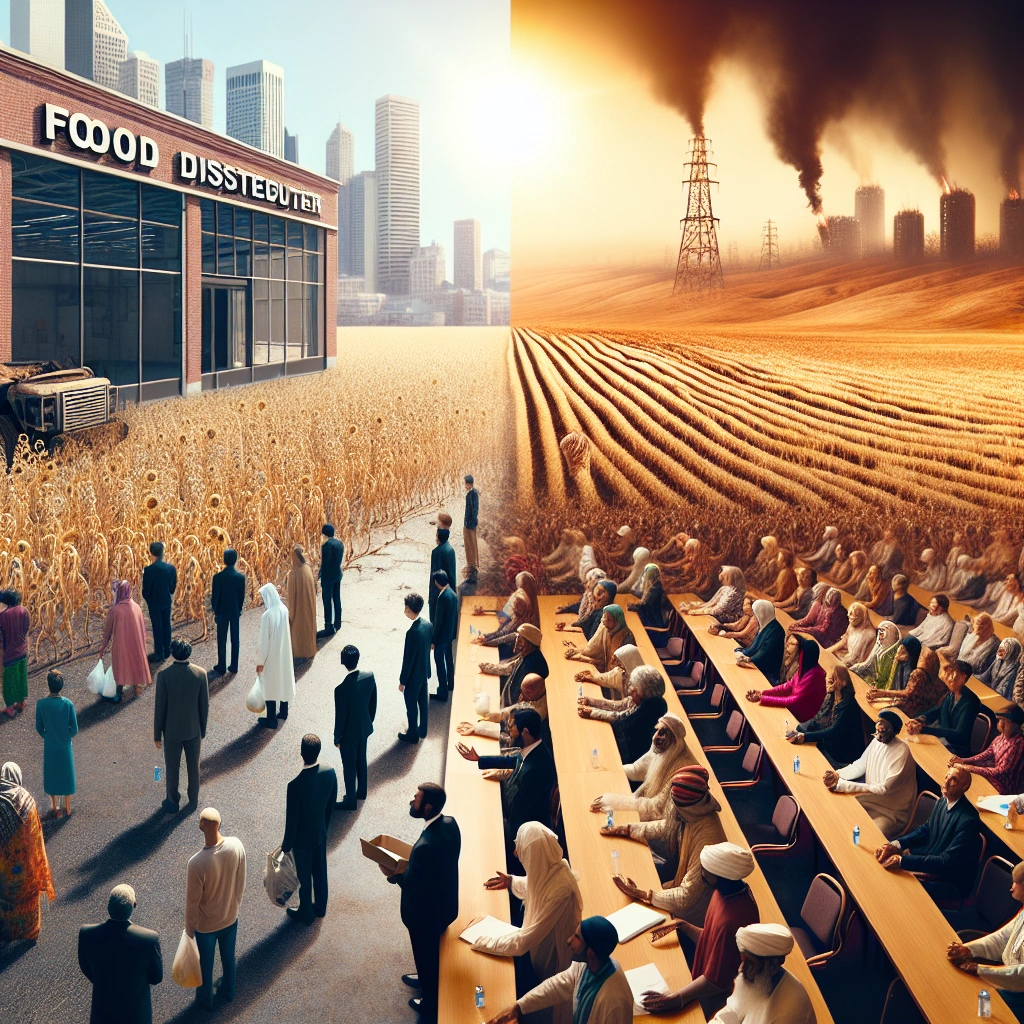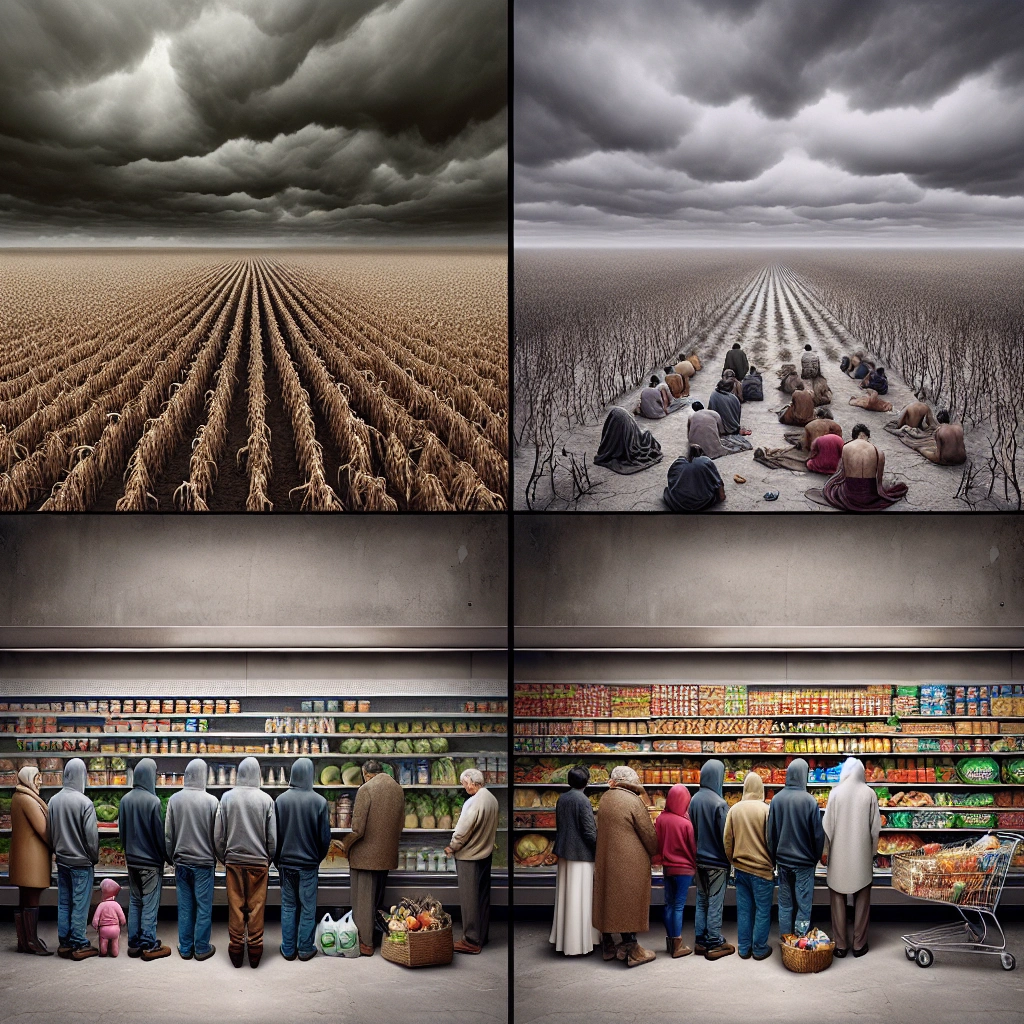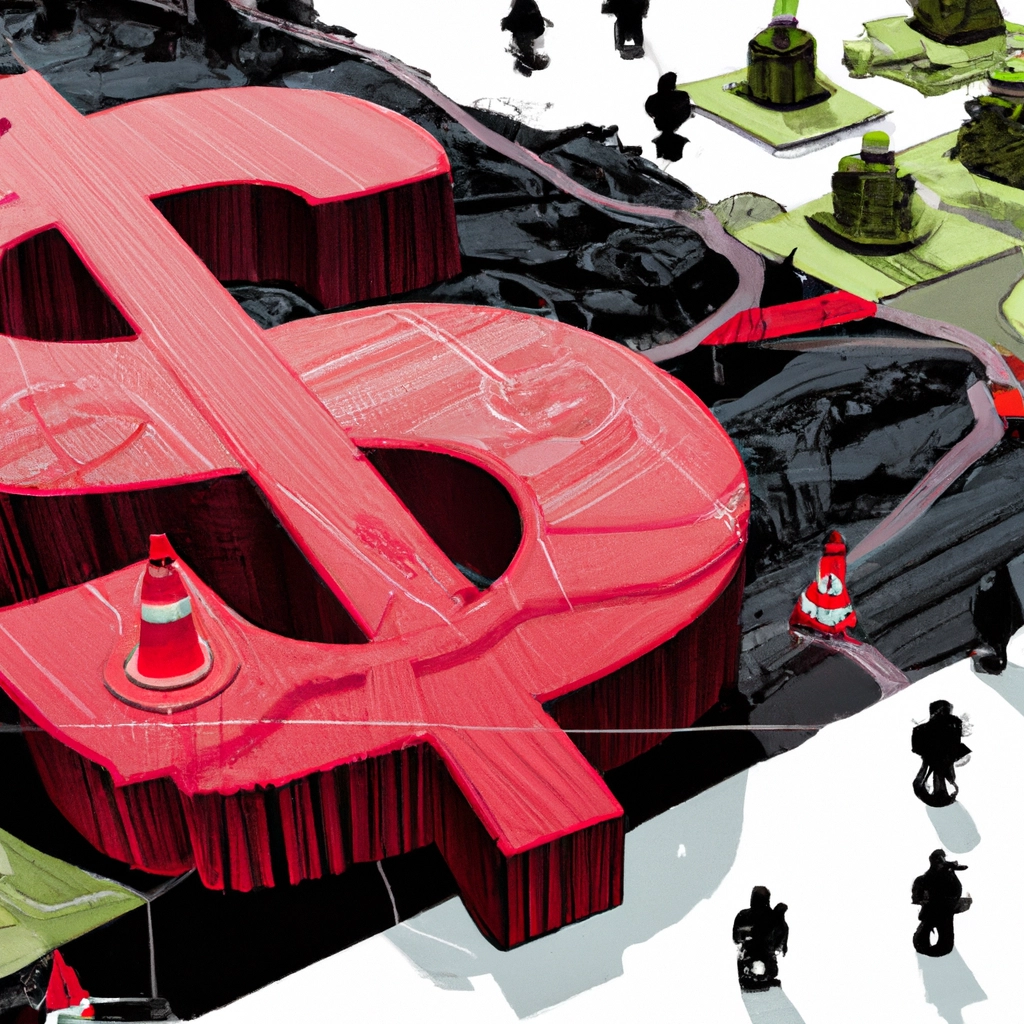

The factors contributing to food shortages in Europe are multifaceted and complex. Economic factors such as rising food prices and income inequality contribute to the problem.
Other factors include climate change, agricultural policies, and supply chain disruptions.
Check out this Youtube video: “The 13 Food Shortages To Expect In 2023 – YouTube” to uncover the factors contributing to food shortages in Europe and gain awareness about the upcoming challenges in the food industry.
Economic Factors
The impact of economic instability on food production is significant, as it leads to higher production costs, decreased production efficiency, and reduced inventories. Economic downturns pose risks for food security, as they can result in declining local purchasing patterns and reduced landscape amenities, affecting the entire food supply chain.
Additionally, socio-economic uncertainties such as energy-related fluctuations and political instabilities further contribute to the increase in production costs, leading to a decrease in family income and changes in consumption habits.
Furthermore, trade policies and tariffs play a crucial role in influencing food imports and exports. Tariffs raise the price of imported items, impacting the prices of both healthy and unhealthy food imports.
Consequently, increased trade liberalization results in a surge in food imports, causing a shift in the pattern of agricultural exports and imports to reflect changes in trade policies and economic growth. Moreover, retaliatory tariffs imposed by countries on U. S. agricultural exports have negatively impacted the agricultural industry and could lead to future production disruptions, further raising food prices.
Environmental Factors
The effects of extreme weather events on crop yields are substantial. When extreme weather conditions such as droughts, heavy rain, heat waves, and frosts occur, they frequently result in severe crop yield losses, impacting both the quantity and quality of crops.
These events are known to cause significant income losses for farmers on a global scale, undermining agricultural productivity and posing a threat to food security.
Consequences of soil degradation and loss of arable land are equally concerning. Soil degradation, including erosion and nutrient degradation, leads to a decline in soil fertility, ultimately reducing the land’s productivity for agriculture.
It poses a threat to food and water provision, as well as air quality, impacting human health through complex pathways. Additionally, the loss of arable land due to urban sprawl, uncontrolled grazing, drought, and desertification further exacerbates the challenges in sustaining food production.
| Effects of Extreme Weather Events | Consequences of Soil Degradation and Loss of Arable Land |
|---|---|
| Severe crop yield losses | Decline in soil fertility and productivity |
| Income losses for farmers | Threat to food and water provision |
| Global impact on agriculture | Impact on air quality and human health |
Political Factors
Political instability and its impact on food distribution
Political instability poses a significant threat to food distribution in Europe. Unrest and conflicts can disrupt international trade, leading to trade barriers and embargoes that restrict the flow of food commodities.
This, in turn, results in increased food prices and reduced availability, exacerbating food shortages.
Government policies and regulations affecting food supply and demand
Government policies and regulations play a crucial role in shaping food supply and demand. Policies directly or indirectly impacting supply, prices, safety, and nutritional composition influence consumer choices and the overall nutritional quality of diets.
For instance, confidence in the food supply is significantly affected by regulations, which can impact consumer demand.
Social Factors
Changing food consumption patterns and their impact on food availability
Plant-forward eating is a rising trend, with an increased interest in incorporating more produce into daily diets. For instance, there has been a 10% surge in the desire to enhance fruit and vegetable consumption compared to 2021. This shift in consumption habits directly impacts food availability and distribution, influencing the types and quantities of food required in the market.
Socioeconomic disparities contributing to food inequity
Socioeconomic factors play a significant role in food inequity, where poverty and food insecurity often coexist, leading to disparities in access to nutritious food. Studies indicate that lower food expenditure correlates with less-healthy food choices among lower socioeconomic groups.
Additionally, rates of food insecurity are notably higher among Black and Hispanic individuals compared to their white counterparts, highlighting the influence of socioeconomic status on food access and health outcomes.
Technological Factors
The role of technology in enhancing or hindering food production is crucial in addressing food shortages. Advancements such as 3D printing and robotics integration into food production lines have revolutionized the industry, allowing for personalized nutrition on a large scale.
These technological innovations improve efficiency and productivity in food production, leading to a more streamlined and efficient process. Digital technology also plays a significant role in revolutionizing agriculture and the global food production system, making it more resilient, productive, and less wasteful.
When it comes to innovation in agricultural practices to mitigate food shortages, technologies like drones, automated processing, and robots have had a notable impact. These innovations have empowered food manufacturers to offer personalized nutrition on a large scale, while at-home testing kits enable consumers to align dietary choices with their genetic profiles.
Additionally, innovative technologies and practices are critical to enabling sustainable farming that can feed the world and protect the planet, addressing challenges such as food and water scarcity.
Technology has become a transformative force in the food industry, enhancing both the production and distribution of food while mitigating food shortages through innovative agricultural practices. The role of technology cannot be understated in ensuring a more efficient, resilient, and sustainable food production system worldwide.
| Positive Impacts of Technology | Negative Impacts of Technology |
|---|---|
| Enhanced efficiency and productivity | Potential environmental impact |
| Personalized nutrition on a large scale | Technological barriers in certain regions |
| Sustainable farming practices |
Global Supply Chain Factors
Vulnerability of global supply chains to disruptions
Supply chain disruptions, such as the impact of the pandemic on global trade, have revealed the vulnerability of global supply chains to unforeseen events. The interconnectedness of the world economy has magnified the effects of these disruptions, leading to shortages of key goods and price inflation.
This vulnerability calls for the reevaluation of supply chain strategies to ensure resilience in the face of future disruptions.
Dependence on imports and its implications for food security
The dependence on imports significantly impacts food security, particularly in Europe. Disruptions of key food and fertilizer exports from specific regions contribute to challenges in accessing essential commodities, ultimately affecting food availability and affordability.
The implications of this dependence highlight the need for strategies to mitigate the effects of such disruptions and ensure stable food supplies within Europe.
Cultural Factors
The influence of cultural norms and traditions on food availability in Europe is significant. For example, certain cultural practices may limit the types of food available, leading to shortages of specific items.
Additionally, cultural traditions surrounding food production and consumption can impact the overall availability of food within certain regions. These factors can influence the variety and quantity of food accessible to people, contributing to potential shortages in specific areas.
The impact of cultural preferences on food production and distribution also plays a critical role in addressing food shortages in Europe. Cultural preferences may influence the types of crops grown and livestock raised, further impacting the availability of certain food items.
Moreover, distribution channels and processes may be influenced by cultural preferences, affecting the efficient and equitable allocation of food resources. Addressing these cultural influences is essential in developing effective strategies to mitigate food shortages in Europe.
| Influence of cultural norms and traditions on food availability | Impact of cultural preferences on food production and distribution |
|---|---|
| Certain cultural practices may limit food availability in Europe | Cultural preferences influence the types of crops grown and livestock raised |
| Cultural traditions can impact the overall availability of food | Distribution channels and processes may be influenced by cultural preferences |
Understanding and addressing the influence of cultural norms, traditions, and preferences on food availability and production is crucial in tackling food shortages in Europe. It requires a comprehensive approach that respects and integrates diverse cultural practices while ensuring sustainable and equitable access to essential food resources.
Health and Nutrition Factors
The relationship between food shortages and public health is undeniable. The lack of access to affordable, nutritious food directly impacts the well-being of individuals and communities.
This can lead to an increased risk of chronic health conditions such as diabetes, obesity, heart disease, and mental health disorders. Studies have consistently shown that food insecurity contributes to negative health outcomes and disparities, affecting millions of people and posing a significant threat to both physical and mental health.
The nutritional consequences of food insecurity are profound. Individuals experiencing food shortages may face challenges in maintaining adequate nutrient intakes, leading to a higher risk of anemia, cognitive problems, and lower overall health.
Additionally, food-insecure adults may be at an increased risk for obesity and chronic diseases, creating a concerning cycle of health challenges stemming from insufficient access to nutritious food.
| Chronic Health Conditions | Negative Health Outcomes |
|---|---|
| Diabetes, Obesity, Heart Disease | Anemia, Cognitive Problems, Lower Nutrient Intakes |
Historical Perspective
Historical events that have contributed to food shortages in Europe
During the early 1300s, Europe experienced famines and food shortages due to unfavorable climate conditions as it transitioned from the Medieval Warm Period to the Little Ice Age. This shift led to a decrease in temperature and devastating floods, disrupting harvests and causing mass famine.
Additionally, the First World War saw governments imposing price controls on staple foodstuffs, leading to food queues formed of women and children becoming a common sight in European cities.
Lessons learned from past food crises
The food crisis of 2007-2008 and subsequent crises have highlighted the importance of domestic self-sufficiency in staple food production. It’s essential to enable the free flow of food, bolster social safety nets, and enhance prevention and preparedness to mitigate future food crises.
Moreover, avoiding export bans, supporting farmers, and reinforcing social safety nets play crucial roles in addressing food shortages. Learning from previous crises, the international community calls for cooperative actions to ensure food security.
Case Studies
Examples of recent food shortages in Europe
In 2023, Europe faced a significant food crisis due to the combination of factors, including the war in Ukraine, implementation of the European Green Deal, the COVID-19 pandemic, and inflation. The war in Ukraine disrupted supply chains and trade agreements, leading to scarcity and soaring food prices.
Additionally, the European Green Deal, aimed at environmental sustainability, impacted traditional agricultural practices, affecting food production and distribution.
Analysis of the factors contributing to specific food crises
The main drivers behind the food crisis in Europe were conflict, economic downturns exacerbated by the COVID-19 pandemic, and climate change. Internal conflicts in several countries aggravated food shortages, while the pandemic caused economic disruptions, affecting the ability of individuals and nations to access food supplies.
Furthermore, climate change led to adverse weather conditions, affecting agricultural productivity and food security. These factors collectively contributed to the complex food crisis experienced across Europe.
| Factor | Contribution to Food Shortages in Europe |
|---|---|
| Conflict | Disrupted supply chains and trade agreements, leading to scarcity and soaring food prices |
| Economic Downturns | Exacerbated by the COVID-19 pandemic, causing economic disruptions and affecting access to food supplies |
| Climate Change | Adverse weather conditions impacting agricultural productivity and food security |
Future Prospects
The future of food availability and demand in Europe is anticipated to witness significant trends. As per the European Food Trends Report of 2023, pressure will mount for COP28 decision makers to drive a sustainable food system.
This will likely lead to greater pressure on decision makers as momentum builds for the flagship climate conference in the United Arab Emirates. Moreover, diverse meat alternative food products are expected to develop, supported by increased backing from investors and policymakers amid rising demand and pressure.
Additionally, targeted nutrition solutions are projected to become more localized in response to local needs and challenges. Furthermore, technology is predicted to play a crucial role in increasing food system resilience in the aftermath of crises such as the war in Ukraine and COVID-19.
The anticipated challenges related to food shortages in Europe include food insecurity, impacted by the COVID-19 pandemic and Russia’s invasion of Ukraine. According to the Global Food Crises mid-year update of 2023, almost 238 million people across 48 food crisis countries were facing high levels of acute food insecurity as of early August 2023. Extreme weather events in Europe have also caused significant reductions in key crop yields, contributing to the evolving crisis of food security. Another critical challenge is addressing the global food crisis with the high food prices and scarcity of supplies, causing millions of people around the world to struggle to obtain food.
As for potential solutions to food shortages in Europe, one of the major priorities for EU countries is to assist Ukraine in exporting its agri-food production, which has been severely compromised due to the ongoing crisis. Supporting Ukraine’s exports can contribute to addressing the growing food insecurity.
Additionally, halving food loss and waste in Europe’s food supply chains could lead to significant improvements. For example, reducing food waste can have a substantial positive impact on greenhouse gas emissions caused by food consumption in Europe, as well as agricultural areas and grazing areas.
| Challenges | Solutions |
|---|---|
| Food insecurity due to geopolitical and environmental factors | Support Ukraine’s exports to address food insecurity |
| High food prices and scarcity of supplies | Reducing food loss and waste in Europe’s food supply chains |
Europe’s future food prospects reveal a combination of anticipated trends, including an increased focus on sustainability and technology-driven solutions, alongside challenges and potential solutions to address food shortages and insecurity in the region.
Stakeholder Perspectives
Views of farmers, food producers, and distributors on food shortages
Farmers and Food Producers: As a food lover and fashion enthusiast, I gotta tell you, farmers and food producers are facing significant challenges due to food shortages in Europe. With unpredictable weather patterns, crop diseases, and labor shortages, they are facing immense pressure to meet the growing demand for food.
Distributors: Let me tell you, distributors are struggling to navigate the complex web of uncertainties in the food supply chain. Disruptions due to the pandemic and shifting consumer spending habits have put immense pressure on their ability to ensure a steady flow of food to consumers and businesses.
Perspectives of policymakers and experts on addressing food insecurity
Policymakers: When it comes to policymakers, they need to step up their game and make specific choices to address food insecurity. Strategies centered around addressing economic challenges and providing adequate support to vulnerable families are an absolute necessity to combat this issue.
Experts: Experts emphasize the importance of improving food production and distribution by ensuring access to fertilizers and promoting crop diversification. This, together with creating jobs and raising wages, can significantly alleviate food shortages and insecurity in Europe.
| Stakeholder | Perspective |
|---|---|
| Farmers/Producers | Struggling with weather, labor shortages, and crop diseases |
| Distributors | Navigating uncertainties in the food supply chain due to pandemic and changing consumer habits |
| Policymakers | Need to make specific choices and strategies to address economic challenges |
| Experts | Emphasize improving food production, distribution, creating jobs, and raising wages |
Let’s make Europe fashionably food secure!
Importance of Addressing Food Shortages
The consequences of prolonged food shortages on society and the economy are dire. They lead to malnutrition, stunted growth in children, and increased susceptibility to diseases.
Economically, food shortages result in inflated prices sparking inflation and increased poverty levels.
The need for urgent action to mitigate the impact of food shortages is critical. Without food security, there is a risk of social unrest and political instability.
It requires a swift and comprehensive approach, involving global cooperation and investment in sustainable agriculture, to alleviate these pressing issues.
Policy Recommendations
The EU and its member states could implement policies that support agri-food production, aiming to boost domestic production and reduce reliance on imports. By investing in sustainable agriculture, promoting efficient use of resources, and incentivizing innovative farming techniques, the EU can enhance its food security and reduce the risk of shortages.
Additionally, strategies for enhancing food security and resilience could focus on building a coordinated approach among EU countries to address the global food crisis. This would involve creating a framework for solidarity, sustainable production, trade, and multilateralism.
By aligning policies and efforts, EU countries can collectively tackle the challenges of food shortages and ensure the availability of nutritious food for all citizens.
Moreover, the EU’s response to the evolving food crisis could involve significant financial support. By earmarking substantial funds and support for global food security, the EU can play a pivotal role in mitigating the impact of the crisis on vulnerable populations.
Through continued investment and aid allocation, the EU can contribute to stabilizing food systems in countries facing critical shortages.
In addition, it’s crucial for the EU to adapt its food assistance to specific crisis situations, ensuring the availability, accessibility, and consumption of safe and nutritious food. This adaptability is vital in addressing the varying needs of different regions and populations, thereby strengthening the overall food security framework across the EU.
Lastly, to enhance resilience, reducing the dependency of European agriculture on energy-intensive imports and feed imports is essential. By diversifying import sources, fostering robust multilateral and bilateral trade policies, and fostering sustainable livelihood strategies, the EU can safeguard its food supply chain and mitigate the risks of potential food crises in the future.
Recommended Amazon Products for Addressing Food Shortages in Europe
Here’s a curated list of products that can help address food shortages in Europe. These recommendations are based on their functionality, price, and customer reviews.
1. Hydroponic Growing System
A hydroponic growing system allows individuals to grow fresh produce indoors, without the need for extensive outdoor space. The AeroGarden Harvest Indoor Hydroponic Garden is a highly-rated and popular choice for home hydroponic gardening.
It provides a controlled environment for plant growth and can contribute to increasing local food production.
Pros and Cons of the Hydroponic Growing System:
| Pros | Cons |
|---|---|
| Easy to use and maintain | Initial investment cost |
| Year-round growing capability | Requires electricity for operation |
| No soil needed | Limited to growing certain types of plants |
2. Solar-Powered Water Pump
A solar-powered water pump can help mitigate the impact of environmental factors such as extreme weather events on crop yields. The Lewisia Solar Water Pump Kit is an efficient and eco-friendly option for providing water to crops in remote or off-grid locations, contributing to maintaining agriculture despite adverse climate conditions.
Pros and Cons of the Solar-Powered Water Pump:
| Pros | Cons |
|---|---|
| Environmentally friendly | Relies on sunlight for operation |
| Low operating costs | Weather-dependent efficiency |
| Easy to set up and maintain | Initial setup cost |
3. Food Dehydrator
A food dehydrator is an essential tool for preserving food, especially during times of surplus to prevent waste. The Nesco Snackmaster Food Dehydrator is a top-rated product that can be used to dry fruits, vegetables, and herbs, extending the shelf life of perishable items and reducing food waste.
Pros and Cons of the Food Dehydrator:
| Pros | Cons |
|---|---|
| Preservation of food nutrients | Takes time to dehydrate food |
| Space-saving storage | Upfront cost of the appliance |
| Versatile use for various food items | Energy consumption during operation |
4. Long-Term Food Storage Containers
Long-term food storage containers are crucial for stockpiling food supplies to prepare for future food shortages. The Rubbermaid Brilliance Pantry Airtight Food Storage Containers offer airtight seals to keep food fresh, and their stackable design saves space while ensuring a systematic storage approach.
Pros and Cons of the Food Storage Containers:
| Pros | Cons |
|---|---|
| Airtight and leak-proof | Initial purchase cost |
| Stackable for space-saving organization | Limited to dry food storage |
| Various sizes available | Not suitable for liquid storage |
5. Community-Supported Agriculture (CSA) Subscription
A Community-Supported Agriculture (CSA) subscription connects consumers to local food producers, promoting sustainable agricultural practices and reducing dependence on global supply chains. Subscribing to a CSA shares from a nearby farm enables access to fresh, locally-grown produce, contributing to supporting small-scale farming and food security.
Pros and Cons of the CSA Subscription:
| Pros | Cons |
|---|---|
| Access to fresh, seasonal produce | Dependency on local farm availability |
| Support for local farmers | Limited selection of items compared to grocery stores |
| Promotes sustainable agriculture | Requires commitment to the subscription |
Top Recommended Product for Addressing Food Shortages in Europe
If you’re looking for the best solution for addressing food shortages in Europe, we highly recommend the Hydroponic Growing System. The AeroGarden Harvest Indoor Hydroponic Garden provides year-round growing capability and is easy to use and maintain. Ready to improve food availability and contribute to local food production? Check out the AeroGarden Harvest Indoor Hydroponic Garden today for the best results!


Conclusion
Food shortages in Europe can be attributed to a variety of factors. These include extreme weather conditions such as droughts and flooding, which can negatively impact crop yields and food production.
Additionally, rising global temperatures due to climate change can also contribute to food shortages by affecting the growth and availability of certain crops.
Furthermore, food shortages in Europe may also be exacerbated by political and economic issues, such as trade disputes and sanctions that disrupt the flow of food imports. These factors can lead to limited access to certain food supplies, further contributing to shortages in the region.
Additionally, economic instability and income inequality can also make it difficult for some individuals and families to afford an adequate amount of food, leading to shortages and food insecurity.
Addressing food shortages in Europe requires a multi-faceted approach that considers the impact of climate change, political and economic stability, and access to resources. By addressing these factors and working towards sustainable solutions, it is possible to mitigate the impact of food shortages and ensure food security for all individuals in Europe.


